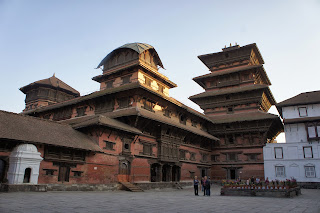Kathmandu Still
After lunch, I head to another UNESCO Heritage site. I do not remember the name of the temple this time as I have been visiting quite a fair bit actually. I enjoyed watching the daily life of the Nepalese people and have captured some pictures of what they do on a daily basis.
I saw a woman selling chicks in woven basket like these.
A woman prepping her stall, unsure whether she is ending or just starting her day.
This temple is taken near Patan.
An old lady selling Sal leaves (from the Cotton Tree) which leaves are weaved and formed into a bowl which is used to place offerings to the Gods in all the temples that I have come across
Kumari (Ghar) Temple or accommodation. Read more about Kumari here Life of A Kumari
Kathmandu Durbar Square
Part of an old palace and temple which is now a museum
Have you seen so many pigeons in a square
Yup and cows everywhere too
The temple which was supposed to be related to the Kumari legend
where the actual Goddess resides in
Kathmandu Durbar Square
Kathmandu Durbar Square or Hanumandhoka Durbar Square is the plaza in front of the old royal palace of the Kathmandu Kingdom. It is one of three Durbar Squares in the Kathmandu Valley in Nepal, all of which are UNESCO World Heritage Sites.
The Durbar Square is surrounded with spectacular architecture and vividly showcases the skills of the Newar artists and craftsmen over several centuries. The royal palace was originally at Dattaraya square and was later moved to the Durbar square location.
The Kathmandu Durbar Square holds the palaces of the Malla and Shah kings who ruled over the city. Along with these palaces, the square surrounds quadrangles revealing courtyards and temples. It is known as Hanuman Dhoka Durbar Square, a name derived from a statue of Hanuman, the monkey devotee of Lord Ram, at the entrance of the palace.
Read more here Kathmandu Durbar Square
The old palace
Wooden sculpture and carving of the window
More wooden window frames - the way the wooden frames were designed is that the occupant inside the palace is able to view outside whereas anyone from the outside can never see through the window into the palace
The palace has been converted into a museum and most of the items them cannot be photographed. those are the stone carvings and the relics from the palace. Most of the carvings depicts the Gods the Hindus pray to and some does not look 'too good' to be photographed.
After this I went on a mini shopping trip around the square. A lot of tourist souvenir looking shops selling t-shirts and etc. However I was only looking for cashmere items. My guide took me to a reputable seller and his goods were definitely of the high quality but it does not come cheap. I did not end up getting anything as I was looking for a specific colour and style. So my pocket did not hurt but my heart did ache as the cashmere was so soft to the touching and I really wished they had what I wanted.
Well it's the end of Day 6.












